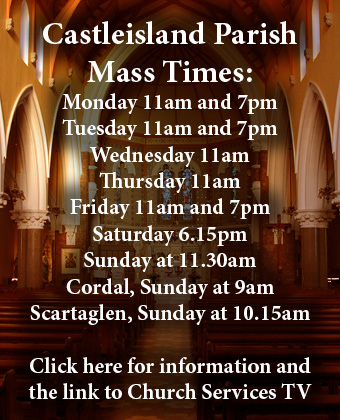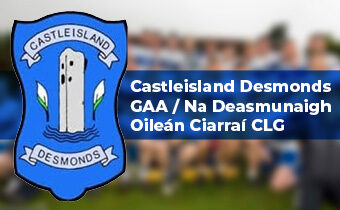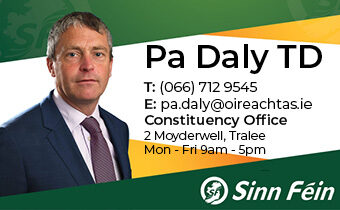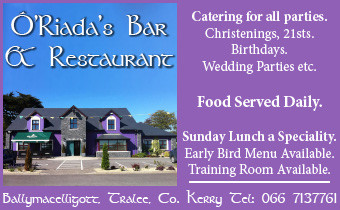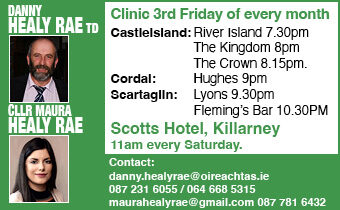
On Monday, June 16th of last week a wreath was laid at the monument on the site of an accidental explosion at Glountane where Tom Fleming lost his life and a number of others were injured on June 16th 1921.
The well-kept monument had been freshly painted and well presented by local man, Patrick O’Leary – who lives nearby.
In the course of his extensive research into the event, Eamonn Breen came across a vivid account in the Bureau of Military History 1913-1921 by Captain Peter Browne of the Scartaglin Company of the Irish Volunteers. In the following account, Captain Browne tells the story of that fateful afternoon of Thursday 16th June 1921:
“We stayed at Kilquane, Cordal, that night and the following day, having nothing else on, some of us decided to pay a visit to a battalion engineering camp that was being held at Glountane, Cordal, a short distance away. Tom Fleming, formerly of the Brigade Column, was in charge of the class. He was a native of Currow and had been in my section in the column.
I had sworn him into the Volunteers in Tralee in 1918, where he worked as a mechanic before going on the run after participating in the seizure of arms at Tralee railway station. The class was in full swing when we arrived in the afternoon. There were representatives of all the companies of the battalion attending the class. The purpose was to instruct suitable men from each company to prepare and set off a land mine.
The explosives used were home-manufactured ‘Black Powder’ made from charcoal and saltpetre. An electric detonator and electric battery were used to set off the charge. The class was assembled on a by-road a short distance off the public road in a very remote and hilly part of the area. There was little danger of surprise from the enemy so there was no guard out locally.
The instructor carried out a demonstration and for the purpose he had filled the iron box of a horse cart wheel with black powder. One end of the box he had previously sealed up with a block of wood while he packed the powder gently into the’box’ through the open end.
We were all interested in the demonstration and were seated on the side of the road in two rows facing each other, with our legs into the dyke of the road. I was directly in front of Tom Fleming, the instructor, with my back against the earthen fence. He had previously cautioned all about the danger of smoking and the electric battery and wires were put carefully aside while the filling was going on.
He had the ‘box’ between his knees. The man on the other side of him was holding the ‘box’ steady while he packed in the last of the powder and drove in with a hammer the plug of wood intended to seal the second end through which wire from the detonator extended.
The conversation was general. An aeroplane passed overhead going towards Cork. As the day was very fine and clear somebody suggested that we should remain motionless as the plane passed as we could be seen. Someone else suggested blowing up the plane. Scarcely were the words uttered when there was a loud explosion. I was blown back against the fence, while through a dense smoke I could see men scrambling on either side of me. I thought the plane had dropped a bomb. I got to my feet and stumbled over somebody. I lifted up the body. It was Tom Fleming.
The smoke was clearing and I said something. The man I had lifted recognised my voice and said “For God’s sake put a bullet through me”. I could notice clearly his mangled body while I tried to console him. I sent for priest and doctor, though realising that he had no need for the latter, while he repeated the act of contrition after me . He was bleeding from several gashes in his legs, head, hands and body.
I endeavoured to stop the main arteries with assistance, hoping to keep him alive until the priest arrived, but gradually he grew fainter and fainter until finally, after about ten minutes, he passed out. There was no time for sentiment. Others were rolling in agony round me. I turned my attention to them and found two of them in a bad way. The flesh was burning off them.
They had got a blast of the powder in the face and clothes, as well as some cuts from flying scrap. There were others with less injuries lying around so I had a look at them and concentrated on the more serious cases. After months of treatment under doctor’s care they all survived, one with the loss of an eye and a few fingers off.
It was a sad procession as we journeyed from Glountane to Milleen with the dead body of our comrade and to Kilsarkan churchyard the following day when he was laid to rest. The funeral, considering the time and the danger, was immense and was vividly representative of all adjacent parishes.”
In Den Prendeville’s account of the incident he says Bernard Coffey, Heffernan and Nolan were badly burned.
If anyone has any further information on the incident they could contact Eamonn Breen at 066 71 41068 or by email to: eire.og@hotmail.com










